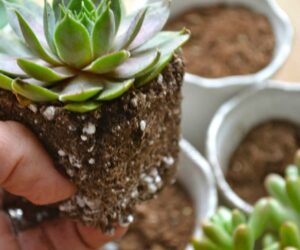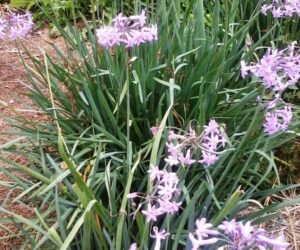There are many ways of planting. Pots are a really good solution where there’s not that much space available or if the plants are spreading too fast. The great thing about container planting is that you can carry them around to ensure the best conditions.
Pot flowers can brighten up the patios, decks, porches, etc. Containers are also very useful when you want to grow year-round flowers, herbs, and vegetables or when you have to move plants into the house for the winter. Here are some great and helpful tips for planting in pots.
1. Preparing Your Pots for Planting

Via www.hgtv.com
You must take care of proper drainage. Many garden pots that are sold simply don’t have holes big enough for water to get out of the pot. The soil then becomes too wet, and the roots of your plants can rot. You can simply drill into the base several times with a masonry bit. Another thing is to put large pebbles in the pot’s base to prevent the soil from being flushed out.
2. Pot size

Via bonnieplants.com
Find out how much your plant will grow to make sure your pot can accommodate that. When you have larger containers, you can plant different plants together. In that case, it’s important to consider how well the plants grow together and if they have similar watering and sunlight needs.
3. Soil mixture

Via www.hgtv.com
You can buy proper soil, or you can choose to make your own mixture. Often gardeners, for example, mix one part of garden topsoil with one part of mature compost or peat moss and one part of clean builder’s sand. The more soil you will use, the more water retention you will have.
4. Planting

Via www.youtube.com
Fill the container partly with the prepared soil mix. If your pot is very large and heavy, first put it at the location where it will be. Start planting in the center and filling it as needed so that the plants will have the same level in the original containers. Pack the soil gently around the plant.
5.Water

Via www.leafly.com
It is different when you water plants planted directly in soil from watering the ones planted in containers. Potting soil normally holds less water since it is often less dense. You have to keep the soil moist throughout, but not wet. Too much water will kill your plants. Many plants grown in pots need to be watered once or twice a day when it is hot.
6. Sunlight

The majority of plants need 7-12 hours of sunlight a day. The amount of light needed for certain species is shown on the packet or label. If it says full sun, it means around 7 hours; partial sun means that plants require 5 hours of sunlight a day, and when it says shade, it means less than 4 hours with filtered sunlight during the rest of the day.
7. Temperature

The majority of the plants grow best when the temperature is between 55 and 75° F. When it gets really hot, you may consider putting pots together to shade each other. The good thing about planting in pots is that you can move them when needed. You have to bring them inside before the frost.
8. Problems

Via gardeningafterfive.wordpress.com
There are normally fewer pest attacks on container plants. However, we can still find some insects, diseases, or other problems. You can try to avoid some by using clean potting mix and containers. Check plants before buying them to make sure they are healthy and wash them before planting. Get rid of plants that have already lost more than half of their leaves due to attack or infection.
9. Plants good for pot planting

Herbs that will grow well in pots are parsley, rosemary, sage, basil, dill, fennel, marjoram, mint, oregano, cilantro, thyme, etc. Beans, carrots, cabbage, cucumbers, peppers, radish, tomatoes, eggplant, kale, green onions, and spinach are some of the vegetables appropriate for pot planting. There are also many varieties of flowers that will thrive nicely in containers.
10. Nutrients

Via www.hgtv.com
Many potting soils don’t have enough nutrients for your plants. They will need fertilizer added to their soil to thrive. Annual plants benefit most if you use a fertilizer with a solution high in nitrogen when you plant them. Later you can switch to a low-nitrogen, high-phosphorous solution for better blooming.



